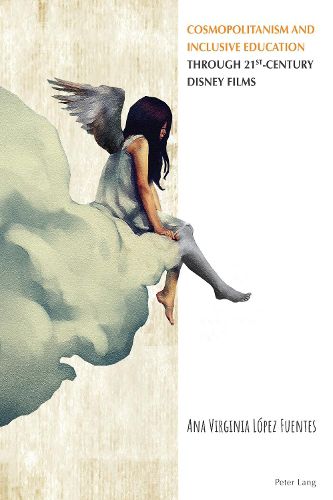Readings Newsletter
Become a Readings Member to make your shopping experience even easier.
Sign in or sign up for free!
You’re not far away from qualifying for FREE standard shipping within Australia
You’ve qualified for FREE standard shipping within Australia
The cart is loading…






This title is printed to order. This book may have been self-published. If so, we cannot guarantee the quality of the content. In the main most books will have gone through the editing process however some may not. We therefore suggest that you be aware of this before ordering this book. If in doubt check either the author or publisher’s details as we are unable to accept any returns unless they are faulty. Please contact us if you have any questions.
By highlighting the links between cosmopolitanism and inclusive education, this book explores the potential of 21st-Century Disney films to tackle some contemporary social and cultural issues in order to promote inclusive values. This manuscript claims that the link between both fields is cosmopolitan education, which brings together the values and theories of cosmopolitanism and inclusive education. In particular, it examines three 21st-Century Disney animated films under a cosmopolitan lens to explore how they help to construct and reflect discourses about cosmopolitan issues such as geographical and cultural borders, global cities and climate change. The case studies were chosen on the basis of the Index for Inclusion: A Guide to School Development Led by Inclusive Values (Booth and Ainscow 2016), a document that aims to provide a new form of school curriculum adapted to 21st-Century social needs. The Index contains a list of sixteen inclusive values, which were used to determine the inclusive potential of the films. The inclusive values explored in each of the analyses were <> in Tinker Bell and The Secret of the Wings, <> in Zootopia , and <> in WALL-E. This book uses textual analysis to explore how these three films can be used to teach and promote cosmopolitan issues such as the roles and meanings of borders, the global city and ecology in the classroom.
$9.00 standard shipping within Australia
FREE standard shipping within Australia for orders over $100.00
Express & International shipping calculated at checkout
This title is printed to order. This book may have been self-published. If so, we cannot guarantee the quality of the content. In the main most books will have gone through the editing process however some may not. We therefore suggest that you be aware of this before ordering this book. If in doubt check either the author or publisher’s details as we are unable to accept any returns unless they are faulty. Please contact us if you have any questions.
By highlighting the links between cosmopolitanism and inclusive education, this book explores the potential of 21st-Century Disney films to tackle some contemporary social and cultural issues in order to promote inclusive values. This manuscript claims that the link between both fields is cosmopolitan education, which brings together the values and theories of cosmopolitanism and inclusive education. In particular, it examines three 21st-Century Disney animated films under a cosmopolitan lens to explore how they help to construct and reflect discourses about cosmopolitan issues such as geographical and cultural borders, global cities and climate change. The case studies were chosen on the basis of the Index for Inclusion: A Guide to School Development Led by Inclusive Values (Booth and Ainscow 2016), a document that aims to provide a new form of school curriculum adapted to 21st-Century social needs. The Index contains a list of sixteen inclusive values, which were used to determine the inclusive potential of the films. The inclusive values explored in each of the analyses were <> in Tinker Bell and The Secret of the Wings, <> in Zootopia , and <> in WALL-E. This book uses textual analysis to explore how these three films can be used to teach and promote cosmopolitan issues such as the roles and meanings of borders, the global city and ecology in the classroom.